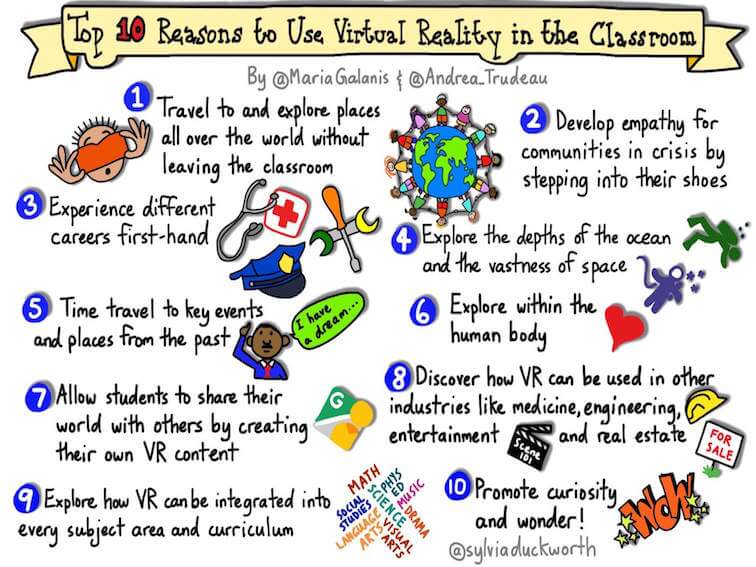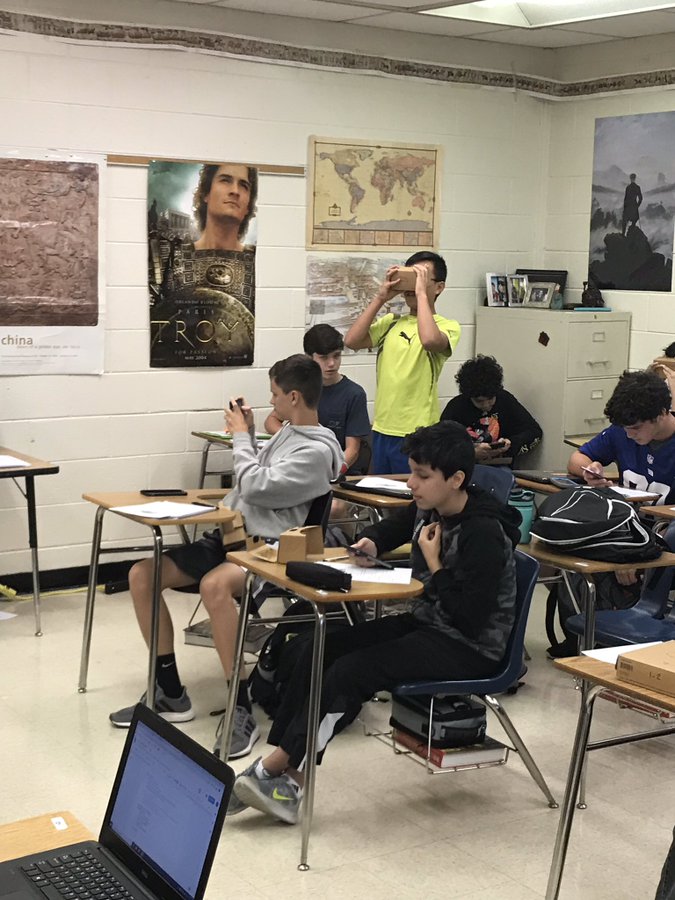Passion Project: Virtual Reality
To the Educational Community,
Outdated “Murder, She Wrote” clip aside, my search for a “passion project” led me to looking into learning more about the use of virtual reality (VR) and/or augmented reality in the classroom. I consider myself one of the more tech-friendly, technologically-savvy educators in my building, but I knew very little about either virtual reality or augmented reality, so I thought that I wanted to explore something that might be considered “cutting edge.” However, as I began my investigation into a passion project, it slowly dawned on me as that my true motivation might be a bit more selfish. Let me explain….
I have taught for 17 years and I was really good at holding kids’ attention with my history “stories” and engaging anecdotes for 16 years. This year, thanks to a shift from 45 minute classes to 90 minute block schedules, as well as students’ access to social media, cellular devices, Instagram, et cetera, I have had to work harder than ever before to engage student interest. I found myself looking to find that “WOW!” factor missing in my room. I don’t think, or at least I certainly hope, that I am not alone in looking to better engage my students. Every teacher should continuously seek out ways to amp up engagement. For better or worse, the students in the world today are growing ever more comfortable and reliant on technology in their lives. For better or worse, part of our role as educators is to capture their attention and interest, even if some of us feel like we should inherently have it. Quality teachers meet their students where they are; in today’s world, that means finding technology that has the potential to spark curiosity and engage their learning.
I believe that VR presents every educator, not just me, the opportunity and the means with which to engage (re-engage?) our students’ interest with that WOW! factor that some of us might be missing!

The infographic above spells out several compelling reasons for using VR in the classroom, but I would certainly add a few more. The first reason is because kids seem to want to learn more about this technology in the classroom. CommonSense Media reports that over 70% of students surveyed have expressed an interest in bringing VR into the classroom.
Another reason that I want to see more teachers begin to experiment with VR is that nearly every county or district has minimized funding for field trips. Because I teach world history, the use of VR is a powerful tool to sharing visuals of those places we talk about in my classroom, but have no feasible way of getting to. Here is an example below from my actual classroom:
Some additional reasons that I would encourage teachers to begin exploring VR is that assignments given can, and should, foster cooperation and teamwork in the classroom. Virtual Reality also present unique possibilities to help students with autism and ADD/ADHD.
Option 1: An Inexpensive Introduction to VR
One of the easiest, cheapest, and least time-consuming ways to introduce VR into your classroom is to take advantage of those powerful mini-computers that many students already bring with them into your classroom. You can find a cheap set of Google Cardboard for as little as $5 online or a local store. After that, it is relatively easy to download one of the several free applications available on your phones: Discovery Expeditions, Google Street View, Sites in VR, or Nearpod.
Another inexpensive option is the Merge Cube.
The Merge Cube is available commercially for as low as $1 in some stores, but you can also download a free paper version of the foam VR cube from the internet.
Option 2: For the more adventurous…
There exist many models of VR and AR headsets that can be purchased, starting at $399 for the Oculus headsets and going up to $599 for Microsoft’s Hololens 2.
These headsets are obviously cost-prohibitive for most teachers. I would encourage educators to partner with their school’s technology departments and administrators to explore the possibility of writing a grant or seeking community and/or corporate sponsorships as a way to possibly get this technology in the classroom sooner rather than later.
Virtual Reality and Augmented Reality represent the frontier of technology in the classroom. Many developers and software companies believe that there is vast amount of potential for VR and AR in the classroom. According to BusinessWire and Fortune, the VR industry is expected to grow from $16.8 billion in 2018 to over $160 billion in just 4 short years in 2023. Over 1/3 of virtual reality programmers and developers are working specifically in the field of education.
In summary, this “passion project” has ignited my imagination for what the future of my classroom looks like. It will likely take some time until VR and AR are regular features of any classroom, but the potential is there and it is exciting to think about how we can harness the technology to teach English, math, science, and social studies. Seeing that our time in this Technology course is drawing to a close, I will leave you, the reader, with this point to ponder:
Is it not better to begin planning for the classroom of tomorrow today?
Helpful Link: 25 AR and VR Resources for the Classroom, courtesy of Dr. Richardson:
https://www.iste.org/explore/In-the-classroom/25-resources-for-bringing-AR-and-VR-to-the-classroom
Citations:
https://www.commonsense.org/education/articles/what-the-research-says-about-vr-in-classrooms
Thompson, M. (2018, January 11). Making Virtual Reality a Reality in Today’s Classroom. Retrieved from Making Virtual Reality a Reality in Today’s Classrooms Meredith Thompson01/11/18 – https://thejournal.com/articles/2018/01/11/making-virtual-reality-a-reality-in-todays-classrooms.aspx
https://builtin.com/edtech/virtual-reality-in-education
https://www.fortunebusinessinsights.com/industry-reports/virtual-reality-market-101378
https://arvr.google.com/cardboard/
https://www.businesswire.com/news/home/20190604005175/en/Commercial-Public-Sector-Investments-Drive-Worldwide-ARVR



